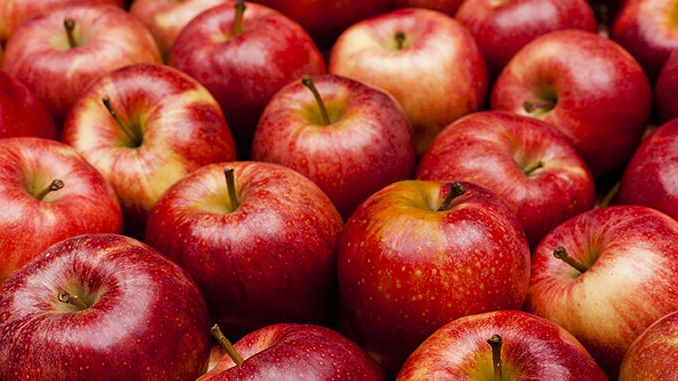The short answer is yes, you can!
While apples do turn brown soon after slicing because enzymes inside the apple react to oxygen when sliced and left exposed, this actually will not affect the flavor if you cook them.
This happens because cooking the fruits will break down the cell walls of the flesh, releasing acids that will break down the brown pigment and turn them into a lighter color.
On top of that, if they are cooked, the flavor of the fruit will stay the same whether they were sliced five minutes before cooking or even one full day, meaning you can slice apples ahead of time and not have a difference in flavor or texture.
But that being said, even if the flavor and color remain unaffected as long as you cook the fruit, no one likes seeing brown apples.
That’s why in this article, we take a look at the real reason apples brown, how that affects the flavor, and how you can keep your own slices from turning brown.
Related: An A-to-Z List of Fruits (With Pictures)
Why Do Apples Turn Brown When Sliced?
The reason this fruit turns brown once you slice them is that slicing them exposes the flesh to air.
Apples contain specific enzymes and iron that will react to oxygen in the air, which results in them turning brown.
And most of us know that all it takes is a couple of minutes of exposure to air for the fruit to turn that color.
Seeing brown slices is not exactly an appetizing sight, but the question remains, does it change the flavor?
Do Brown Apples Taste Different?
While it isn’t the best sight to see, browned apple slices actually don’t taste that much different from fresh and light-colored ones.
In fact, the only difference between light-colored slices and brown ones is the color as they will feel and taste about the same in your mouth.
And if you cook the fruit after slicing such as making a syrup or a filling for a pie, the heat and baking process breaks down the cell walls of the fruit, which results in it returning to its signature light and bright color.
So that means it’s completely fine to slice your apples the day before cooking and baking since the taste will remain the same.
That being said, you still don’t want your slices to go bad, so even if you do so, make sure to put them in a ziplock bag or airtight container and keep it in the fridge to ensure that they stay as fresh as possible.
How Do I Keep My Apples From Browning?
While the taste won’t be changed by much, brown apple slices still aren’t a nice sight to see, so we’ve laid down a couple of tips you can use to prevent your slices from going brown.
Water
This is the easiest and simplest method.
All you have to do is put the slices directly submerge them in the water right after you cut up the fruit.
Naturally, the slices might rise to the top of the water, and if that happens, you can simply put a paper towel on top of that.
The paper towel will absorb the water and naturally weigh the apple slices down to stay submerged.
You can even add a 1/8 teaspoon of salt to the mix to further prevent browning, just make sure to rinse the fruits with clean water so they won’t be salty.
Airtight Containers
Since the fruit slices brown when exposed to oxygen, you can slow down the process by reducing their exposure to air.
To do this, you can either use air-tight plastic containers or simple ziplock bags.
However, you are still going to have to treat the apples by submerging them in water beforehand.
If you’re using a ziplock bag, make sure to squeeze out all the air inside before sealing it.
It’s also important to remember that these methods won’t keep them from browning forever, but instead, they will slow down the process by a couple of hours.
Conclusion
So there you have it.
It is perfectly fine to slice your apples the day before because even if they do turn brown, this won’t affect the taste or texture that much, all it does is make it look unappetizing.
But luckily, if you’re cooking or baking with the fruit, the process will break down the cell walls of the fruit and it will also break down the brown pigments and turn it into a light color again.
And now that you’re equipped with this information, all that’s left for you to do is try them yourself in the comfort of your own kitchen!

